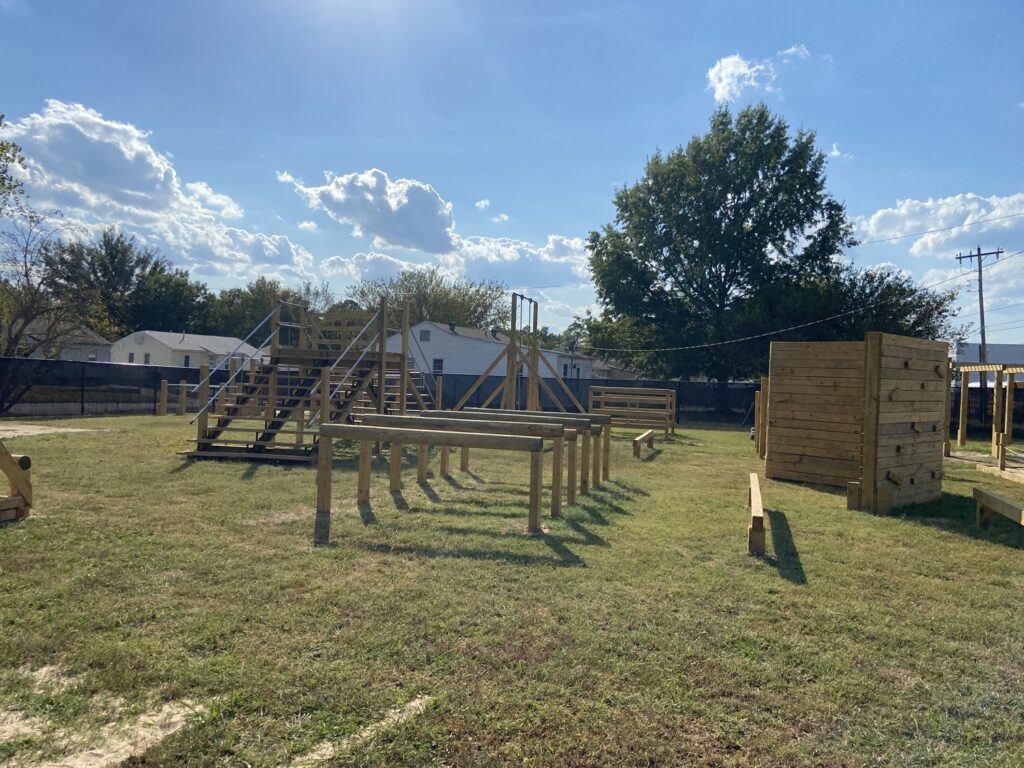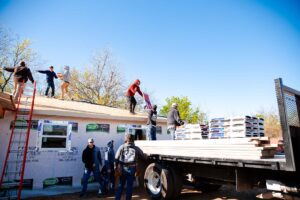Drive west on Mary Lynn Drive from Main Street, one block south of Central Tech’s Sapulpa campus, and you might be surprised to spy a pristine, state-of-the-art obstacle course recently installed by the career tech school.
Central Tech owns property along Mary Lynn, including houses and the large side yard where the fenced-in obstacle course lies.
Assistant Director Mike Baugus explained that the institution has been brainstorming about what to do with this empty space for the last couple of years, and that Director Dr. Kim Howard created an advisory committee made up of state and local law enforcement officers to develop a plan for its best use.
The conclusion was to create a truly remarkable asset for the school’s Criminal Justice Program unlike anything else in the area. Not only is it the only one in any criminal justice program at a career tech school in the state, but no local law enforcement agencies, including the Sapulpa and Tulsa Police Departments and the Creek and Tulsa County Sheriff’s Offices, have anything like it. In fact, several of those and other nearby entities have already put in requests to use the course to train their LEOs in the next few months.
Arizona-based company Adventure Fitness, known for its sophisticated and grueling courses, like those used to qualify for the well-known American Ninja Warrior challenge, designed and built the formidable course in about 7 days with a 3-man crew, finishing in the beginning of September.
Baugus says that the advisory committee did its due diligence while vetting companies, including performing background and reference checks. They were impressed with what they learned about “Adv.Fit,” as it’s known, and felt comfortable entrusting the safety of their students to its well-built and well-constructed equipment.
Criminal Justice Instructor Ryan Dunn, who is going on his 4th year at Central Tech and who has decades of military and law enforcement experience under his belt, said that his students have been using the course in various degrees about three times a week since its construction.
The course features snake-like traversing, in that its obstacles weave a serpentine trail from beginning to end. Dunn notes that one of the more difficult aspects to the program is how closely spaced the features are to one another.
“Not having a chance for your heart rate to come down or to think about how to traverse the next one, it really taxes that stamina and agility. If you’re racing against the clock or another person, it really requires you to think quickly. There are both physical and mental benefits to an obstacle course designed like this,” the instructor says.
Of the many obstacles included in the course, the dummy drag, balance beam, agility tires, over-under-through, traverse wall, rope swing, and 12 foot wall, are just a few that exist to challenge participants.
When asked if a good grade is dependent on the successful completion of the course, Dunn emphasises that there is “no pass or fail” regarding the obstacle course, rather, it is part of the team-building dynamic of the class.
In fact, it’s rare that the course is traversed from beginning to end in one attempt—most often students “master each obstacle as they go” and individual parts are used as learning tools and as a way to “foster a team environment. It’s not just to compete…the way this is designed, it’s impossible to finish [all or part of the course] without working together.”
That being said, Dunn says that he has several students who could finish the course in its entirety, and that he has done it himself. “It was very tough,” he reported.
The lifespan of the course is expected to be around 10 years, but if it’s well-maintained and properly weather proofed, it could last up to 20 before requiring replacement.
The house attached to the course has yet to be used, but Baugus and Dunn say that when the class reaches that portion of their instruction it will be used quite often, for domestic violence training, crime scene investigation, and practice serving warrants, among other exercises.
Central Tech’s Criminal Justice program currently has 32 students, most of whom are in high school. Dunn said that after completing the 2-year program, graduates end up in “a variety of places,” but as most of them are still too young to become police officers or sheriff’s deputies, many find positions in County jails or as dispatchers, and many others go on to college or into the military.
Maybe one of the most important services Dunn provides his students is to “hold them accountable” during their time with him. “One of the things we do when they first come to me is go over why they’re in this class” so they have a realistic idea of “the next step,” he says. Additionally, the school brings in several public entities and law enforcement agencies every year to demonstrate what a career in the criminal justice field really entails.
Dunn says that his program would like to partner with any local law enforcement agency to train on the obstacle course, and that any ROTC organizations or team-building groups are also welcome to give it a try.
For more information, please contact Central Tech’s Sapulpa campus at 918-224-9300.
Photos by E.B. Thompson


















